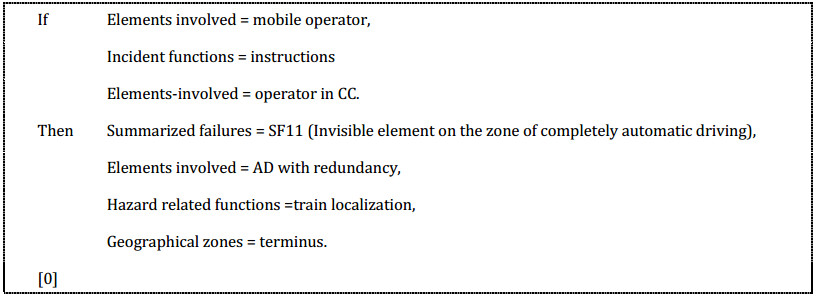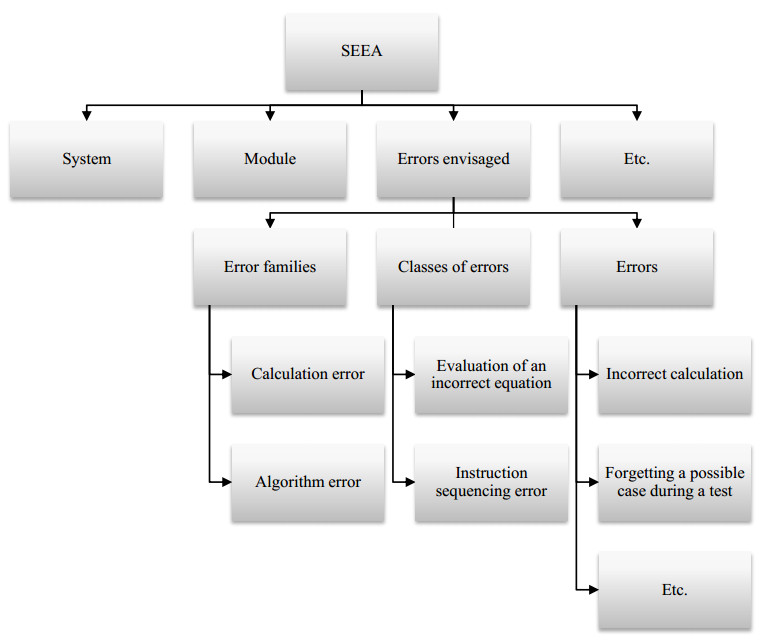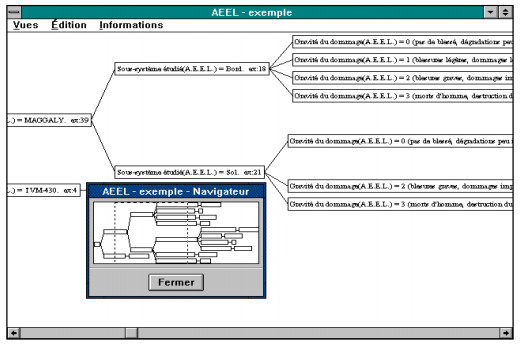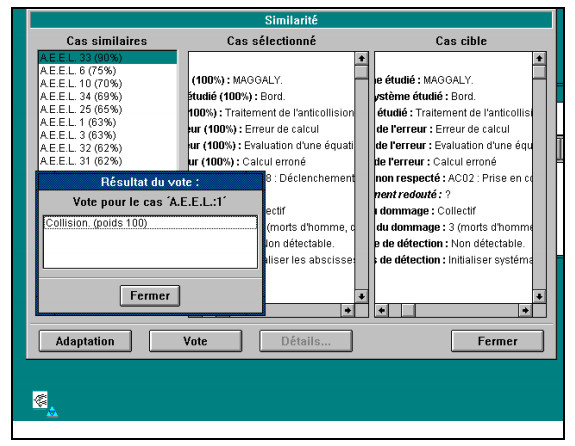1. Introduction
Investment is an important means of earning profit for insurance companies, reinsurance is in use for controlling insurers' risk exposure. Recently, it became a hot point in optimization and control fields to consider reinsurance and investment synthetically under risk models. There are two main models of reinsurance-investment problem, that is, maximizing the insurer's expected utility of terminal wealth and minimizing the probability of ruin under reinsurance-investment strategies, and each model is based on the quantitative description for insurer's surplus processes. From the known literature, we see that two major types of mathematical model for the surplus of the insurance company are usually exploited, which are the Cramer-Lundberg model and the diffusion model, the former is the so called classical risk process, and the later is an approximation to the former which is feasible as one deals with large insurance portfolios, where an individual claim is relatively small compared to the size of the surplus.
In our paper, the continuous-time mean-variance reinsurance-investment problem is to be considered, where multiple risky assets for investment exist in the market and diffusion model is exploited to describe the risk process of the insurance company. Under diffusion model of the risk process, related reinsurance-investment problems have attracted a great deal of interest. Promislow et al. (2005) studied the optimal reinsurance-investment strategy to minimize the probability of ruin for insurance companies. Taksar et al. (2003) also obtained the optimal reinsurance-investment strategy to minimize the probability of ruin for insurance companies under diffusion model of surplus process. By solving the corresponding Hamilton-Jacobi-Bellman equations, Cao et al. (2009) obtained the optimal reinsurance-investment strategies for maximizing the utility of terminal wealth with exponential and power utility functions. Luo et al. (2008) studied the similar problem as Cao et al. (2009) in Black-Scholes market subject to some investment constraints. All of the literature (Browne, 1995; Promislow et al., 2005; Taksar et al., 2003; Cao et al., 2009; Luo et al., 2008) researched their optimization problems in Black-Scholes market with single risky asset. Bai et al. (2008) considered the reinsurance-investment problem in Black-Scholes market with multiple risky assets and no-shorting constraint. Zhang et al. (2009) studied the optimal reinsurance-investment problem of maximizing the expected exponential utility of terminal wealth and solve it by using the corresponding Hamilton-Jacobi-Bellman equation. It is noted that the transaction costs when investing in the risky assets and conditional Value-at-Risk to control the whole risk have been considered.
For the sack of practical need in management, mean-variance portfolio selection model initiated by Markowitz has attracted much attention all the time. There has been few literature up to now which devoted themselves to studying the continuous-time mean-variance reinsurance-investment problem, however, the continuous-time mean-variance portfolio selection problem was researched by Zhou et al. (2000)with the help of stochastic linear-quadratic method. As the subsequent paper, Lim et al. (2002) pointed out: there are many advantages of using the framework of stochastic linear-quadratic control to study dynamic mean-variance problems, meanwhile it was recognized that the solution to the problem could also have been obtained via dynamic programming and the associated Hamilton-Jacobi-Bellman equation when the market coefficients are assumed to be deterministic. It is observed that, when the market coefficients are assumed to be deterministic, the Lagrange method can be applied to solving the continuous-time mean-variance portfolio selection problems, which was expounded in Chow (1997) in a general way and was applied to investment decisions and pricing of contingent claims in Chow (1996) and Chow (1999), respectively. The Lagrange method is more popular than other dynamic optimization methods. For our continuous-time mean-variance reinsurance-investment problem with deterministic market coefficients, the Lagrange method is also a simple one to obtain our results, which is the main reason for this research. It should be recognized that the Lagrange method is limited to complex circumstances such as random market coefficients, which induces more complex backward stochastic differential equation for solving the process of the Lagrange multiplier. For more details on the subject, we refer to the recent work such as Chen et al. (2013), Shen et al. (2015), and so on.
This paper is organized as follows: In Section 2, we state the mean-variance optimization problem. In Section 3, we use the Lagrange method to analysis the mean-variance problem, necessary and sufficient conditions for the problem are discussed, the optimal strategy and its effective frontier in explicit forms are obtained. In Section 4, we show a numerical example.
2. Problem Formulation
Throughout this paper we denote by M′ the transpose of any matrix or vector M=(mij), ||M||=√∑i,jm2ij its norm, Rm the mdimensional real space, 1 the vector with unit entries, [0,T] the finite horizon of investment and Et the expectation at time t∈[0,T].
Market uncertainty is modeled by a filtered complete probability space (Ω,F,P,{Ft}t∈[0,T]). Assume that the filtration {Ft}t∈[0,T] is generated by an (m+1)-dimensional standard Brownian motion {(W0t,W1t,⋯,Wmt)′:t∈[0,T]} for a positive integer m. F0={Φ,Ω}, FT=F.
We recall that the space LF,2([0,T];Rm) of mean square integrable functions u(t,x) from R×Ω to Rm possesses a natural Hilbert space structure, inducing the norm
|
||u||F,2=(E0∫T0||u(t,X)||2dt)12<+∞.
|
Following the framework of Promislow and Young (2005), we model the insurer's claim process C according to a Brownian motion with drift as follows:
where a and b are positive constants. Assume that the premium be paid continuously at the constant rate c0=(1+θ)a with safety loading θ>0, and that the insurer purchase the proportional reinsurance to reduce the underlying risk. Let q(t) represent the proportion reinsured at time t. Similar to the premium paid to the insurer, the reinsurance premium is paid continuously at the constant rate c1=(1+η)aq with safety loading η>θ>0. Based on Eq. (1), the surplus process R(t) is given by the dynamics
|
dR(t)=c0dt−(1−q(t))dC(t)−c1dt=(θ−ηq(t))adt+b(1−q(t))dW0t.
|
(2)
|
In addition to reinsurance, the insurer is allowed to invest its surplus in a financial market in which (m+1) assets are traded continuously over [0,T] in a self-financing fashion (i.e., there is no consumption nor income). The 0th asset is a bond whose price S0(t) is subject to the following deterministic ordinary differential equation:
|
dS0(t)=r(t)S0(t)dt,S0(0)=1,
|
(3)
|
where r(t)∈C([0,T];R+) is the interest rate of the risk-free asset. The remaining m assets are risky and their price processes S1(t),S2(t),⋯,Sm(t) satisfy the following stochastic differential equations:
|
dSi(t)=μi(t)Si(t)dt+σi(t)Si(t)dWt,Si(0)=si>0,i=1,2,⋯,m,
|
(4)
|
where μi(t) and σi(t)=[σi1(t),⋯,σim(t)] are the appreciation rate and dispersion (or volatility) rate of the ith asset, respectively, and W=(W1t,⋯,Wmt)′. We assume that μi(t) and σi(t) are scalar-valued deterministic bounded functions. Denoting
|
σ(t)=[σ1(t)⋮σm(t)]∈Rm×m,
|
(5)
|
we assume throughout that σ(t) is uniformly nondegenerate: that is, there exists δ>0 such that
|
σ(t)σ(t)′≥δI,∀t∈[0,T].
|
(6)
|
A strategy s is described by a stochastic process (q(t),π(t)′)′, where π(t) :=(π1(t),π2(t),⋯,πm(t))′, πi(t) is the dollar amount invested in asset i(i=1,2,⋯,m) at time t.
Let X(t) denote the resulting surplus process after incorporating strategy s into (2). The dynamics of X(t) can be represented as follows.
|
dX(t)=[r(t)X(t)+(θ−ηq(t))a+τ(t)′π(t)]dt+b(1−q(t))dW0t+π(t)′σ(t)dWt,
|
(7)
|
where τ(t)=(μ1(t)−r(t),⋯,μm(t)−r(t))′, X(0)=x0.
The admissible strategy set with initial wealth x0 is defined as
|
A(x0):={s=(q(t),π(t)′)′|q(t),π(t)satisfies(2.7)}
|
The objective of the insurer is to determine an optimal strategy s∈A(x0) such that the variance of the terminal wealth, Var[X(T)], is minimized, subject to that the expected terminal wealth, E0[X(T)], takes a given level K>x0exp(∫T0r(t)dt). This can be expressed as the optimization problem:
|
{mins∈A(x0)Var[X(T)]=E0[X2(T)−K],s.t.E0[X(T)]=K.
|
(8)
|
We introduce a Lagrange multiplier 2ξ∈R and after rearranging terms arrive at the new cost function,
|
E0[(X(T)2−K)2+2ξ(X(T)−K)]=E0[X(T)−(K−ξ)]2−ξ2.
|
Letting γ=K−ξ leads to the following optimal stochastic control problem,
|
maxs∈A(x0){(K−γ)2−E0[X(T)2−γ]2}.
|
(9)
|
Remark 2.1. The link between problem (8) and (9) is provided by the Lagrange duality theorem, see e.g. Luenberger (1968)
|
mins∈A(x0)Var[X(T)]=maxγ∈Rmaxs∈A(x0){(K−γ)2−E0[X(T)2−γ]2}.
|
3. Mean-Variance Analysis by the Lagrange Method
For the first step, we consider problem (9) for a fixed γ. Follow the Lagrange method introduced by Chow (1997), recognizing dX(t)=X(t+dt)−X(t), and let dt be a very small time interval. The Lagrange expression for the optimization problem (9) beginning from t=0 is
|
−∫T0Etλ(t+dt)[X(t+dt)−X(t)−(r(t)X(t)+(θ−ηq(t))a+τ(t)′π(t))dt
|
|
−b(1−q(t))dW0t−π(t)′σ(t)dWt].
|
(10)
|
For simplicity, denote by
|
f(X(t),q(t),π1(t),⋯,πm(t))=r(t)X(t)+(θ−ηq(t))a+τ(t)′π(t),
|
The Lagrange expression (10) can be rewritten as follows.
|
−∫T0Etλ(t+dt)[X(t+dt)−fdt−R(q)dW0t−π(t)′σ(t)dWt].
|
(11)
|
Remark 3.1: By theorem 4.2 of Yong and Zhou(1999), problem (9) with dynamic constraint (7) admits a pathwise unique admissible strategy in A(x0), which implies, for a given γ∈R, maximization of the cost function L in (11) is uniquely solvable, henceforth, the Lagrange multiplier λ=λ(t,X(t)) can be uniquely determined.
3.1. Necessary conditions
Let the function λ be in the form λ=λ(t,X(t)), applying Ito's differentiation rule to evaluate dλ yields
|
dλ=[∂λ∂t+∂λ∂Xf+12∂2λ∂X2(R2(q)+||π(t)′σ(t)||2)]dt
|
|
+∂λ∂XR(q)dW0t+∂λ∂Xπ(t)′σ(t)dWt.
|
(12)
|
Differentiating (11) with respect to X(T), we have
Differentiating (11) with respect to q(t) gives
|
∂L∂q=∂f∂qEtλ(t+dt)dt+EtdW0t∂R∂qλ(t+dt)
|
|
=∂f∂q(λdt+Etdλdt)+EtdW0t∂R∂qλ(t+dt)
|
|
=[∂f∂qλ(t)+∂R∂q∂λ∂XR(q)]dt+o(dt)
|
|
=[−aηλ(t)−bR(q)∂λ∂X]dt+o(dt)=0.
|
Hence
Differentiating (11) with respect to π(t) yields
|
∂L∂π=[λ(t)τ(t)+∂λ∂Xσ(t)σ(t)′π(t)]dt+o(dt)=0.
|
Hence
|
λ(t)τ(t)+∂λ∂Xσ(t)σ(t)′π(t)=0.
|
(15)
|
Noting the term λ(t)[X(t)−⋯] in the integrand of (11), differentiating (11) with respect to X(t)(0≤t<T) gives
|
∂L∂X=−λ(t)+Etλ(t+dt)+∂f∂XEtλ(t+dt)dt
|
|
=−λ(t)+Et(λ(t)+dλ(t))+∂f∂XEt(λ(t)+dλ(t))dt
|
|
=[∂λ∂t+∂λ∂Xf+∂f∂Xλ(t)+12∂2λ∂X2(R2(q)+||π(t)′σ(t)||2)]dt+o(dt)
|
Hence
|
∂λ∂t+∂λ∂Xf+∂f∂Xλ(t)+12∂2λ∂X2(R2(q)+||π(t)′σ(t)||2)=0.
|
(16)
|
Now we state the necessary conditions for the optimization problem (9) as follows.
Proposition 3.1. Let s=(q(t),π(t)′)′ be the optimal reinsurance-investment strategy for the optimization problem (9), then the equations (12)-(16) hold.
3.2. Sufficient conditions
First, we give the explicit expression of the wealth process X(t). Let
|
Y(t)=X(t)exp(−∫t0r(s)ds),
|
which yields
|
dY(t)=exp(−∫t0r(s)ds)[dX(t)−r(t)X(t)dt],
|
In view of (7), we have
|
dY(t)=exp(−∫t0r(s)ds)[((θ−ηq(t))a+τ(t)′π(t))dt+R(q)dW0t+π(t)′σ(t)dWt],
|
and thus
|
Y(t)−Y(0)=∫t0exp(−∫s0r(u)du)[((θ−ηq(s))a+τ(s)′π(s))ds+R(q)dW0s+π(s)′σ(s)dWs].
|
So, we have
|
X(t)=x0exp(∫t0r(s)ds)+∫t0exp(∫tsr(u)du)[(θ−ηq(s))a+τ(s)′π(s))ds.
|
|
+R(q)dW0s+π(s)′σ(s)dW.
|
(17)
|
In view of (17), it is not difficulty to find that both Et[∂X(T)2/∂q2] and Et[∂X(T)2/∂πi2] are positive, which guarantees that the necessary conditions stated in proposition 3.1 are also sufficient conditions for the optimization problem (9) according to Chow (1997).
3.3. Optimal reinsurance-investment strategy
Noting that f=r(t)X(t)(θ−ηq(t))a+(θ−ηq(t))a+τ(t)′π(t), from (3.7) and (3.4), we have
|
{∂λ∂t+[r(t)X(t)+(θ−ηq(t))a+τ(t)′π(t)]∂λ∂X 12[R2(q)+||π(t)′σ(t)||2]∂2λ∂X2+r(t)λ(t)=0,λ(T)=−2X(T)+2γ.
|
(18)
|
According to Remark 3.1, problem (18) has an unique solution λ(t,X(t)). So, in view of (14) and (15), the components of admissible strategy, q(t) and π(t), are uniquely determined. For purpose of getting the unique solution of (18), we start by finding q(t) and π(t) in linear feedback form as follows.
|
q(t)=ϕ1(t)X(t)+φ1(t),π(t)=ϕ2(t)X(t)+φ2(t),
|
(19)
|
where ϕ1,φ1∈C1[0,T;R] and ϕ2,φ2∈C1[0,T;Rm] are deterministic functions to be determined.
From (14) and (19), remarking that R(q)=b(1−q(t)), we have
|
aηλ(t)+b2(1−ϕ1(t)X(t)−φ1(t))∂λ∂X=0.
|
(20)
|
Differentiating (20) with respect to X(t) arrives at
|
(aη−b2ϕ1(t))∂λ∂X+bR(q)∂2λ∂X2=0.
|
Hence
|
R2(q)∂2λ∂X2=(ϕ1(t)−aη/b2)bR(q)∂2λ∂X2=−aη(ϕ1(t)−aη/b2)λ,
|
(21)
|
where (14) is incorporated in the second equality in (21).
From (15) and (19), we have
|
λ(t)τ(t)+∂λ∂Xσ(t)σ(t)′(ϕ2(t)X(t)+φ2(t))=0.
|
(22)
|
Differentiating (22) with respect to X(t) arrives at
|
∂λ∂X(τ(t)+σ(t)σ(t)′ϕ2(t))+∂2λ∂X2σ(t)σ(t)′π(t)=0.
|
(23)
|
Hence
|
||π(t)′σ(t)||2∂2λ∂X2=−∂λ∂Xπ(t)′(τ(t)+σ(t)σ(t)′ϕ2(t)).
|
|
=−∂λ∂Xτ(t)′π(t)+λ(t)ϕ2(t)τ(t),
|
(24)
|
where (15) is incorporated in the second equality in (23). Substituting from (21) and (24) into (18) gives
|
{∂λ∂t+[r(t)X(t)+(θ−ηq(t))a+12τ(t)′π(t)]∂λ∂X +12[2r(t)−aη(ϕ1(t)−aη/b2)+ϕ2(t)′τ(t)]λ=0,λ(T)=−2X(T)+2γ.
|
(25)
|
Characteristic equation of the first order partial differential equation in (25) is
|
dt1=dXr(t)X(t)+(θ−ηq(t))a+12τ(t)′π(t)
|
|
=dλ−12(2r(t)−aη(ϕ1(t)−aη/b2)+ϕ2(t)′τ(t))
|
In view of
|
dt1=dXr(t)X(t)+(θ−ηq(t))a+12τ(t)′π(t)
|
we obtain a first integration as follows.
|
C1=X(t)exp(−∫t0(r(s)−aηϕ1(s)+12τ(s)′ϕ2(s)ds)
|
|
−∫Tt(aθ−aηφ1(u)+12τ(u)′ϕ2(u))×exp(−∫u0(r(s)−aηϕ1(s)+12τ(s)′ϕ2(s)ds)du,
|
where C1 is constant. In view of
|
dt1=dλ−12(2r(t)−aη(ϕ1(t)−aη/b2)+ϕ2(t)′τ(t)),
|
we get another first integration:
|
C2=λ(t)+12∫Tt[2r(s)−aη(ϕ1(s)−aη/b2)+ϕ2(s)′τ(s)]ds,
|
where C2 is constant. It is obvious that both the first integrations obtained above are mutual independent. Invoking the boundary condition in (25), that is, λ(T)=−2X(T)+2γ, relationship between C1 and C2 is
|
C2=−2exp(∫T0(r(s)−aηϕ1(s)+12τ(s)′ϕ2(s))ds)⋅C1+2γ
|
so we get the solution of (25) as following.
|
λ(t)+12∫Tt[2r(s)−aη(ϕ1(s)−aη/b2)+ϕ2(s)′τ(s)]ds
|
|
=−2exp(∫T0(r(s)−aηϕ1(s)+12τ(s)′ϕ2(s))ds)
|
|
×[X(t)exp(−∫t0(r(s)−aηϕ1(s)+12τ(s)′ϕ2(s)ds)
|
|
−∫Tt(aθ−aηφ1(u)+12τ(u)′φ2(u))
|
|
×exp(−∫u0(r(s)−aηϕ1(s)+12τ(s)′φ2(s))du]+2γ.
|
(26)
|
From (26), we see that
|
{∂λ∂X=−2exp(∫Tt(r(s)−aηϕ1(s)+12τ(s)′ϕ2(s)ds)≠0,∂2λ∂X2=0.
|
(27)
|
By (21) and the second equation in (27), we get ϕ1(t)=aη/b2. By (23) and (27), we get ϕ2(t)=−(σ(t)σ(t)′)−1τ(t). Substituting from the results of ϕ1(t) and ϕ2(t) into (27) shows
|
∂λ∂X=−2exp(∫Tt(r(s)−a2η2b2−12||σ−1(s)τ(s)||2)ds):=H(t).
|
(28)
|
Substituting from the results of ϕ1(t) and ϕ2(t) into (26) gives
where
|
h(t)=2∫Tt(aθ−aηφ1(u)+12τ(u)′φ2(u))
|
|
×exp(∫Tu(r(s)−a2η2b2−12||σ−1(s)τ(s)||2)ds)du
|
|
−12∫Tt[2r(s)−||σ−1(s)τ(s)||2]ds+2γ.
|
Then h(T)=2γ, and
|
dhdt=[(aθ−aηφ1(t)+12τ(t)′φ2(t))]H(t)
|
|
+12[2r(s)−||σ−1(t)τ(t)||2],
|
(30)
|
where H(t) is given by (28).
By (22), (29) and ϕ2(t)=−(σ(t)σ(t)′)−1τ(t), we have
|
H(t)φ2(t)=−h(t)(σ(t)σ(t)′)−1τ(t).
|
(31)
|
By (20), (29) and ϕ1(t)=aη/b2, we have
|
H(t)φ1(t)=aηb2h(t)+H(t).
|
(32)
|
Substituting from (31) and (32) into (30) gives
|
dhdt=−(a2η2b2+12||σ−1(t)τ(t)||2)h(t)+aθH(t)+12[2r(t)−||σ−1(t)τ(t)||2].
|
Remarking that h(T)=2γ, we have
|
h(t)=2γexp(a2η2b2(T−t)+12∫Tt||σ−1(s)τ(s)||2ds)
|
|
−∫Ttexp(a2η2b2(u−t)+12∫ut||σ−1(s)τ(s)||2ds)
|
|
×[aθH(u)+(r(u)−12||σ−1(u)τ(u)||2]du.
|
(33)
|
From (31) and (32), we have
|
φ2(t)=−h(t)H(t)(σ(t)σ(t)′)−1τ(t),φ1(t)=aηb2h(t)H(t)+1,
|
so we have
|
{q(t)=ϕ1(t)X(t)+φ1(t)=aηb(X(t)+h(t)H(t))+1;π(t)=ϕ2(t)X(t)+φ2(t)=−(σ(t)σ(t)′)−1τ(t)(X(t)+h(t)H(t)),
|
(34)
|
and
where H(t) and h(t) are given by (28) and (33), respectively. We state one of our main results as follows.
Proposition 3.2. Let τ(t)=(μ1(t)−r(t),⋯,μm(t)−r(t))′, and γ∈R be given. The optimal reinsurance-investment strategy for problem (2.9) are given by (34), and the Lagrange multiplier λ(t,X(t)) is a linear function of X(t) which is given by (35).
3.4. The effective frontier
From (35), we have
|
∂λ∂t=dHdtX(t)+dhdt,∂λ∂X=H(t),∂2λ∂X2=0.
|
From equations (12) and (13), we have the backward stochastic differential equation (BSDE, for short) with terminal value for the Lagrange multiplier λ.
|
{dλ=[dHdtX(t)+dhdt+H(t)f]dt+H(t)R(q)dW0t+H(t)π(t)′σ(t)dWt,λ(T)=−2X(T)+2γ.
|
(36)
|
From (18) we have dHdtX(t)+dhdt+H(t)f=−λr(t). Substituting from (34) into (36), one obtains
|
{dλ=−λ[r(t)dt+aηbdW0t+(σ−1(t)τ(t))′dWt],λ(T)=−2X(T)+2γ.
|
(37)
|
BSDE (37) has the following solution.
|
λ=−2(X(T)−γ)exp[∫Tt(r(s)−l(s)2)ds]
|
|
×exp[aηb(W0T−W0t)+∫Tt(σ−1(s)τ(s))′dWs],
|
(38)
|
where l=a2η2/b2+||σ−1τ||2. By λ obtained in (38), we then have
|
=−2(X(T)−γ)exp[∫T0(r(t)−l(t)2)dt]×exp[aηbW0T+∫T0(σ−1(t)τ(t))′dWt].
|
Hence
|
X(T)=−12(H(0)x0+h(0))exp(−∫T0(r(t)−l(t)2)dt)
|
|
×exp(−aηbW0T−∫T0(σ−1(t)τ(t))′dWt)+γ,
|
which implies
|
E0[X(T)]=−12(H(0)x0+h(0))exp(−∫T0(r(t)−l(t))dt)+γ.
|
From (28) and (33), we have
|
H(0)=−2exp(∫T0(r(s)−a2η2b2−12||σ−1(s)τ(s)||2)ds),
|
and
|
h(0)=2γexp(a2η2b2T+12∫T0||σ−1(s)τ(s)||2)ds)−−h(0),
|
where
|
−h(0)=∫T0exp(a2η2b2u+12∫u0||σ−1(s)τ(s)||2ds)
|
|
×[aθH(u)+(r(u)−12||σ−1(u)τ(u)||2)]du.
|
Denoting by A=H(0)x0−−h(0), we have
|
E0[X(T)]=−12Aexp(−∫T0(r(t)−l(t))dt)
|
|
+γ[1−exp(−∫T0(r(s)−2l(s))ds−12∫T0||σ−1(s)τ(s)||2)ds)].
|
(39)
|
Furthermore, we have
|
X2(T)=14(H(0)x0+h(0))2exp(−∫T0(2r(t)−l(t))dt)
|
|
×exp(−2aηbW0T−2∫T0(σ−1(t)τ(t))′dWt)+γ2
|
|
−γ(H(0)x0+h(0))exp(−∫T0(r(t)−l(t)2)dt)
|
|
×exp(−aηbW0T−∫T0(σ−1(t)τ(t))′dWt),
|
which yields
|
E0[X2(T)]=14A2exp(−∫T0(2r(t)−3l(t))dt)
|
|
+A[exp(−∫T0(2r(s)−4l(s))ds−12∫T0||σ−1(s)τ(s)||2)ds)−exp(−∫T0(r(s)−l(s))ds)]γ
|
|
+[1+exp(−∫T0(2r(s)−5l(s))ds−∫T0||σ−1(s)τ(s)||2)ds)]
|
|
−2exp(−∫T0(r(s)−2l(s))ds−12∫T0||σ−1(s)τ(s)||2)ds)γ2.
|
(40)
|
Using (39) and (40) we can thus give an explicit expression for the optimal cost in problem (8), as a one parameter family in γ
|
(K−γ)2−E0[X(T)−γ]2=K2−2γK+2γE0[X(T)]−E0[X2(T)]=K2−14A2exp(−∫T0(2r(t)−3l(t))dt) −[2K+Aexp(−∫T0(2r(s)−4l(s))ds−12∫T0||σ−1(s)τ(s)||2)ds)]γ −[exp(−∫T0(2r(s)−5l(s))ds−∫T0||σ−1(s)τ(s)||2)ds)−1]γ2.
|
Assume that
|
∫T0(5l(s)−2r(s))ds−∫T0||σ−1(s)τ(s)||2)ds
|
|
=∫T0[4||σ−1(s)τ(s)||2−2r(s)]ds+5a2η2T/b2:=ρ>0
|
(41)
|
hold, using remark 2.1, we see that the minimum Var[X(T)] is achieved for
|
γ∗=−K+A2exp(−∫T0(2r(s)−4l(s))ds−12∫T0||σ−1(s)τ(s)||2ds)eρ−1
|
(42)
|
and
|
mins∈A(x0)Var[X(T)]=eρeρ−1⋅[K+A2exp(−∫T0l(s)ds+12∫T0||σ−1(s)τ(s)||2)ds)]2.
|
(43)
|
Now we state the conclusion of the effective frontier of our mean-variance problem as follows.
Proposition 3.3. Let K=E0[X(T)], τ(t)=(μ1(t)−r(t),⋯,μm(t)−r(t))′, l(t)=a2η2/b2+||σ−1(t)τ(t)||2, A=H(0)x0−−h(0). Assume that (41) hold. The effective frontier of the mean-variance reinsurance-investment strategy for problem (8) is given by
|
Var[X(T)]=eρeρ−1⋅[K+A2exp(−∫T0l(s)ds+12∫T0||σ−1(s)τ(s)||2)ds)]2.
|
(44)
|
4. Numerical Example
Let x0=1, r(t)=0.06, m=3, μ1(t)=0.08, μ2(t)=−0.10, μ3(t)=0.15, a=1, b=0.5, θ=0.2, η=0.3, and
|
σ(t)=(0.200.15−0.06−0.100.300.250.400.050.50).
|
Then
|
σ−1(t)=(2.870−1.3570.9481.9712.157−0.765−2.1740.8701.304),τ(t)=(0.02,0.04,0.09)′,
|
and
|
||σ−1(t)τ(t)||2=0.022865,(σ(t)σ(t)′)−1=(16.8480−1.53454.0478−1.53457.2510−1.80214.0478−1.80213.1843).
|
Hence l(t)=a2η2/b2+||σ−1(t)τ(t)||2=0.382865. In view of (28) and (33), and let e≈2.718, direct calculation gives h(t)/H(t)=0.0732−0.9268×1.9794T−t. According to proposition 3.2, the mean-variance optimal reinsurance-investment strategy are given by (34), that is,
|
{q(t)=aηb2(X(t)+h(t)H(t))+1=1+1.2(X(t)+0.0732−0.9268×1.9794T−t) =1.0878+1.2X(t)−1.1122×1.9794T−t;π(t)=−(σ(t)σ(t)′)−1τ(t)(X(t)+h(t)H(t)) =−(0.63990.09720.2955)(X(t)++0.0732−0.9268×1.9794T−t) =−(0.04680.00710.0216)−(0.63990.09720.2955)X(t)+(0.59310.09010.2739)×1.9794T−t,
|
Remark that
ρ=∫T0[4||σ−1(s)τ(s)||2−2r(s)]ds+5a2η2T/b2=1.77146T>0, A=H(0)x0−−h(0)=0.1308−2.5858×1.3653−T+0.4550×1.4498T. In view of (44), the effective frontier of the mean-variance reinsurance-investment strategy is given by
|
Var[X(T)]=eρeρ−1⋅[K+A2exp(−∫T0l(s)ds+12∫T0||σ−1(s)τ(s)||2)ds)]2
|
|
=5.8784T5.8784T−1⋅(0.0654×1.4498T+0.2775×2.1019T−1.2929×1.0619T+E0[X(T)])2.
|
Furthermore, let T=1, we have
|
Var[X(1)]=1.2050⋅(−0.6948+E0[X(1)])2.
|
Acknowledgments
This work is supported by the Foundation of Guangzhou Academy of International Finance (No: 16GFR01A04, 16GFR01A07).
Conflict of Interest
All authors declare no conflicts of interest in this paper.

















 DownLoad:
DownLoad: